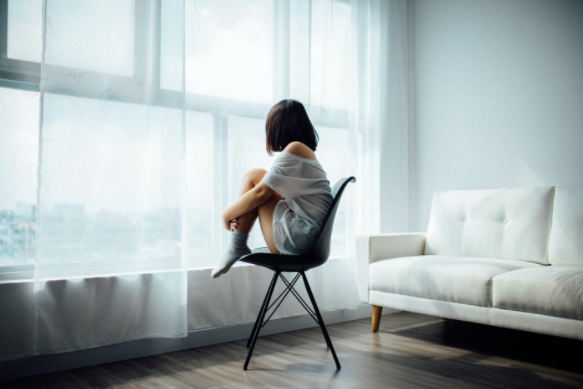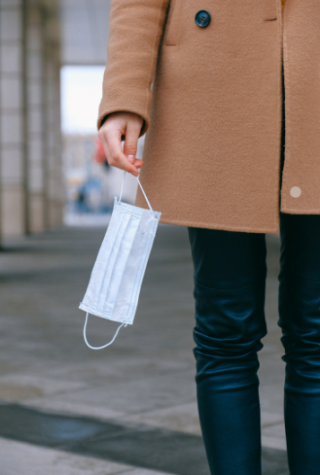The Self-Isolated Guide to Self-Care
Before the pandemic struck, adolescents were learning how to care for themselves; as quarantine continues, and now more than ever, teens are being pushed to put their health first.

Photo by Anthony Tran on Unsplash
December 18, 2020
When cases of Covid-19 were first on the rise few people understood how severely affected our society would be. Now, nine months have passed since the first announcement of a state-mandated quarantine and students are still struggling to pass their classes. Why?
During the Fall semester of 2020, students were offered the opportunity to turn in incomplete and missing assignments over Winter break, with the hope to put an end to the significant amount of classes being failed. As put in a letter from the EUHSD superintendent, “The pandemic has exposed and heightened the socioeconomic inequities that exist in our community. We believe that these inequities, accompanied by the pandemic, have led to social-emotional distress, a sense of helplessness, and ultimately, in many cases, a deterioration of grades.”
The constant stress of being a student was amplified by the hectic events taking place due to Covid-19; young people not only had to balance the struggles of school, home, and work but also had to deal with financial stress and social unrest, and a presidential election.
According to a statistical study by the American Psychological Association, high school and college-aged adults are the generations that withhold the most emotional and physical symptoms of mental health issues compared to their older predecessors–ranging at about 91 percent.
So, this poses the question: Is there a reason why stress and mental health issues have spiked for this recent generation? Could this be a result of high pollution rates or greenhouse gas emissions? Social unrest? Too much screen time?
However, this generation is fortunate to have access to a new wave of information about the brain, social influences, and additional factors used to help young people learn and express themselves simultaneously.
Though brain development is different for each individual. Typically “brain remodeling happens intensively during adolescence, continuing into…mid-20s” research describes.
A significant phrase contributes to this generation’s mental health awareness movement, and that phrase is self-care: maintaining stable mental health is important to young adults.
Mental health can have a significant impact on a person’s personal and academic life; as well as physically. For example, symptoms of depression can include a decrease in appetite, loss of motivation, lack of energy; anxiety symptoms are feelings of agitation, irritability, or tension in the body.
So what is self-care?
Despite what joke tweets and influencer blogs may think, it’s not as simple–or even as difficult– as many may think.
“[I]n terms of different examples of self-care, there’s a lot of different things you can do, like reading a book, baking, cooking, journaling, stargazing, exercising, taking a bath. Self-care looks different to everyone, most typically anything that you can enjoy doing or that relaxes you. So, for everybody, that’s different. But, what’s good to do, is find the self-care activities that you like, and that work for you, and to do them regularly,” says Geraldine O’ Sullivan, the social worker at San Pasqual High School.
Simply put, self-care is taking care of yourself mentally, physically, and emotionally in any way. Because the body is multifaceted.
Self-care can look different for everyone, though many people usually enjoy a lot of the same things due to personality and age range. Self-care can help alleviate problems resulting from mental health issues by reducing stress levels, maintaining hygiene, and regulating neurochemistry.
The World Health Organization defines self-care as: “the ability of individuals, families, and communities to promote health, prevent disease, maintain health, and to cope with illness and disability with or without the support of a healthcare provider.”
“[S]elf-care includes everything related to staying physically healthy, including hygiene, nutrition, and seeking medical care when needed [and] while self-care can help prevent future health problems, it alone is not a cure or treatment for disease or illness.”
From a mental health standpoint, effectively performing self-care can allow one to feel more balanced with increased well-being. Self-care can prevent some of the mental or physical issues from coming up regularly. It can help to balance them” said O’Sullivan.
So what did covid and the pandemic mean for not only physical but also mental health?
What students had thought would’ve blown over by April 2020 has continued into the new year.
Due to the state-mandated quarantine beginning back in March of 2020, all students in the EUHSD were advised to stay home, and thus continue the remainder of the school year online.
Yet this prolonged self-isolation has affected students more than they could’ve imagined.
With school and the covid-19 virus, students have reported an increase of depression, anxiety, and other mental health symptoms as well as a spike in failing grades, paired with less social interaction and an excessive amount of time at home. However, many students have used this time to indulge in simple things such as video games, reading, or designing a meticulous skincare routine. Some students have even organized safe and distanced meetings and short visits to friends and relatives.
Schools such as San Pasqual have also encouraged students to participate in online clubs and socially distanced activities.
There are also ways to practice consistent self-care activities, that are as simple as keeping up with personal hygiene, meditation, or baking bread. As one develops a more consistent routine the more that it will feel normal and even help alleviate stress and perhaps even after quarantine is lifted, students may stick to this routine.
Like all new things, at first it may seem strange or we may worry if we are “doing it right.”
However, there is no “right” way to do self-care since it looks different for everyone, as long as it is recognized as a healthy and beneficial practice.
”Incorporating self-care into each day and taking time for oneself, helps one to put themselves first. And when one is operating from a standpoint of taking care of themself. It tends to have a lasting effect beyond the temporary” states O’ Sullivan.











